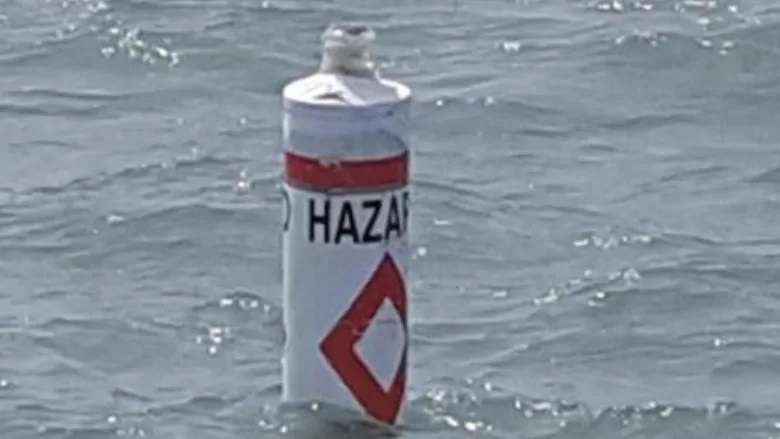CBC News Jonathan Pinto – August 8, 2019
A University of Windsor professor is missing a high-tech scientific research buoy used for studying Lake Erie algal blooms.
On Wednesday, Jill Crossman was on western Lake Erie as part of the annual “HABs Grab” — an international scientific endeavour that saw scientists collect roughly 200 water samples in an effort to map harmful algal blooms (HABs).
On her way back to the mainland, Crossman checked in on her floating research station located in Pigeon Bay, near the mouth of Sturgeon Creek in Leamington, Ont. It’s one of four she installed in the area this past spring.
“They’re taking real-time data of phosphorus concentration, nitrogen, chlorophyll concentration — so they’re also helping us monitor for algal blooms,” she said.
The station in Pigeon Bay consists of three buoys — one large and two smaller. It’s one of the smaller ones that is missing.
“I was pretty shocked, a little bit horrified,” Crossman told Afternoon Drive host Chris dela Torre with a laugh. “The buoy that’s missing has a four-metre chain of light intensity sensors that are monitoring how much light is penetrating down through the water column.”


Jill Crossman is an assistant professor of quantitative hydrology at the University of Windsor’s Great Lakes Institute for Environmental Research. (Jill Crossman)
Crossman explained that unlike some of her sensors, which report data over the internet, the light sensor requires a manual download every two weeks or so. The missing buoy also has a dissolved oxygen meter that requires a manual download at the end of the season.
“The main concern is that this is a lot of data that has potentially gone missing somewhere in Lake Erie that we don’t have yet,” she said.
Crossman speculates that high winds this week may have separated the floating part of the buoy from the equipment, sending the instruments to the bottom of the lake. It’s also possible that the entire apparatus, which weighs approximately 180 kilograms, has drifted away.
“We’re going to use a long grappling hook to try and find the light sensors that might be at the bottom of the lake,” she said. “But also what we’re hoping for, is if people … see the buoy, if they could record the GPS location and let us know, then that would be really helpful.”
Crossman describes the buoy as a white cylinder, approximately 1.2 metres (four feet) tall, with two orange bands and diamonds on it. It also says “Hazard” and “Limnotech” on it. 